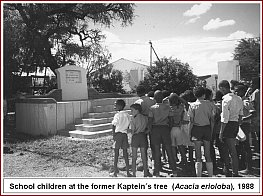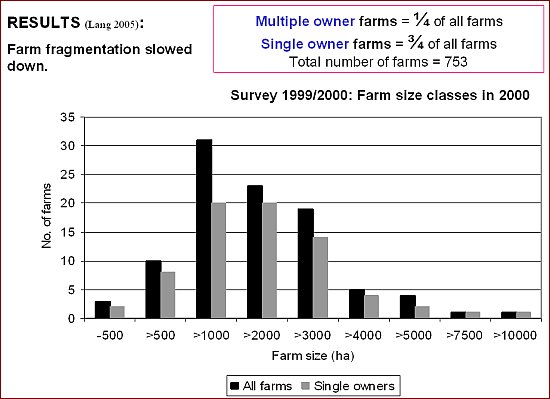The Rehoboth Basters |
 The Rehoboth Basters, representing little more than 2 % of the Nambian population, identify themselves as distinct from other groups of mixed descent on account of their right to land ownership as well as their peculiar history which reaches back into the middle of the nineteenth century.In 1868 they embarked on an exodus from the oppressive colonial rule at the Cape in search of land on which they could make a living by farming with large and small stock. They were pious Christians led by their Kaptein and a German Missionary. The importance of religion persists and a tendency towards fragmentation in the community is reflected in the thirty-five distinct churches marking Rehoboth today. The Rehoboth Basters, representing little more than 2 % of the Nambian population, identify themselves as distinct from other groups of mixed descent on account of their right to land ownership as well as their peculiar history which reaches back into the middle of the nineteenth century.In 1868 they embarked on an exodus from the oppressive colonial rule at the Cape in search of land on which they could make a living by farming with large and small stock. They were pious Christians led by their Kaptein and a German Missionary. The importance of religion persists and a tendency towards fragmentation in the community is reflected in the thirty-five distinct churches marking Rehoboth today.
|
Cultural factors affecting biodiversity |
Farm fragmentation: The value orientations of the Basters had the effect that high population growth and the inheritance pattern resulted in the fast fragmentation of the Baster farms. E.g. by means of a will the Basters could have passed on their farms to a single heir, but the majority let every child get an equal share of the farm with detrimental effects on the pastures. Multiple owner farms: A law against the subdivision of small farms created owners with "undivided shares" in a farm, that have to use the farm jointly. This leads to a "tragedy of the commons" (here degradation of the pastures) on private land. Perception of pasture: Ongoing research on the question whether there is a difference between the Baster farmers´ perception and the assessments of biodiversity by scientists. First results show of a biomass study (1997 / 2006) show, the Duruchaus owner´s perception that multiple ownership of Geelkop is bad for the pastures agrees with the measurements.
|
The farms of Rehoboth Basters |
After a peaceful settling in Rehoboth in 1870 the Rehoboth Basters began to distribute in about 1895 farms to members of the community and thus started a transition from communal to private ownership of land.Population increase, inheritance pattern and political constraints during the better part of the 20th century led to the splitting up of farms into units economically no longer viable but of great significance socially. Survey data gained in 2000 show that the process of subdividing farms recently must have at least slowed down considerably (Lang 2005). It can be inferred from the survey-data that the discontinuation of the fragmentation trend is the result of a change in the value orientation of the farm owners.While Basters are found in jobs all over the country the farm or home in Rehoboth remains the ultimate refuge or retreat. A rural ambience and the freedom of a farm remain an ideal. |

|
